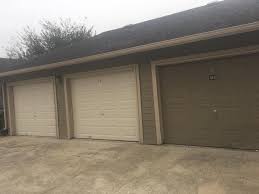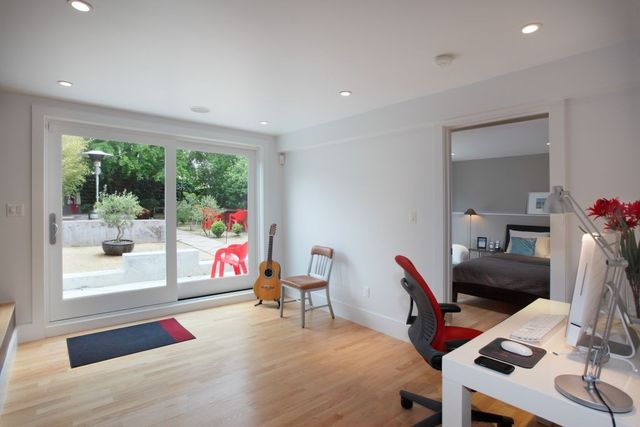
It's a great idea to turn your garage into a workshop. Although it may seem overwhelming, the final result is well worth the effort.
The first step in clearing out your garage is usually to get rid of any clutter or junk that has accumulated over the years. This can include old tools, lawnmowers, gardening equipment, unused machines and anything else that you no longer need in your garage.
Once you've cleared your space, you can plan your new workspace. This will help you determine how much room to give yourself and the types of projects you're going to be working on.
Be sure to include a section that is designated for raw materials as well tools and machinery. This will prevent everything from getting mixed up.

Also, consider designing a storage area where you can store supplies and tools that you use regularly. It is as easy as putting plastic bins on a shelf or using a tool organizer. You can also purchase a large job box that is heavy duty to store more expensive items.
Organization is a key factor in transforming your garage into a workshop. You want to be easily able to access the tools, materials, and other items you need without having a lot of time spent looking through boxes and bins. Also, you can store tools in overhead racks.
Another option is to put up a pegboard. They are ideal for small, lightweight tools that can be stored on a wall, as well as for small containers that hold screws, nuts and other hardware.
After you have organized your workshop it is essential to ensure it is well ventilated, and that it is lit. Do not work in a darkened or cramped environment that can lead to injury, or even death.
You'll want to make sure that you have plenty of natural light and adequate lighting above your work area as well. This will make your job easier and prevent any accidents.

You may need several tools depending on the task you are undertaking. A chop saw and an arc welder might be necessary if your plan is to work with steel.
To do any staining or painting, you will need to have the right chemicals and paints. It is easier to locate these supplies and do the repairs that you need by having them all in one place.
This will help you save money on new products, and your workshop will be safer to work.
You should also consider installing a ventilation system in your workshop to help ensure that the air is breathable and that it doesn't become toxic. You can either have a window screen to control the amount of air that comes in or you can install an exhaust fan to ensure that dust and debris is properly removed from the work area.
FAQ
How long does it usually take to remodel your bathroom?
A bathroom remodel typically takes around two weeks. The size of your project will affect the time taken to remodel a bathroom. For smaller jobs such as installing a vanity or adding an stall to the bathroom, it can usually be done in just a few hours. Larger projects such as removing walls, laying tile floors, or installing plumbing fixtures may require several days.
The rule of thumb is that you should allow three days for each room. So if you have four bathrooms, you'd need 12 days total.
Is $30000 enough to remodel a kitchen?
Depending on your budget, a kitchen renovation could cost you anywhere from $15000 to $35000. For a complete renovation of your kitchen, you can expect to pay over $20,000. However, if you want to update appliances, replace countertops, or add lighting and paint, you could do it for under $3000.
Full-scale renovations typically cost between $12,000 and $25,000. There are ways to save money but not sacrifice quality. You can replace an existing sink with a new one for around $1000. You can also buy used appliances at half the cost of new ones.
Kitchen renovations can take longer than other types projects so plan ahead. It is not a good idea to begin work in your kitchen and realize that you will run out of time.
It is best to start early. Start looking at options and collecting quotes from various contractors. Then narrow down your choices based on price, quality, and availability.
Once you have identified potential contractors, request estimates and compare their prices. The lowest-priced bid isn't always the best choice. It is important that you find someone with comparable work experience to provide an estimate.
Remember to include all the extras when calculating the final cost. These may include labor or material charges, permits and so forth. Be realistic about what you can afford and stick to your budget.
You can be open about your dissatisfaction with any of these bids. If you don’t like the first bid, let the contractor know and offer to give it another chance. Saving money is not a matter of pride.
Why remodel my house when I could buy a new home?
While houses may get more affordable each year, the square footage you pay is still the same. You may get more bang for your buck but you still have to pay for extra square footage.
A house that isn't in constant maintenance costs less.
You can save thousands by remodeling instead of buying a new home.
By remodeling your current home, you can create a unique space that suits your lifestyle. You can make your house more comfortable for yourself and your family.
What should I do about my cabinets?
It all depends on whether or not you plan to rent your home out. If you intend to sell your home, you will likely need to remove and refinish cabinets. This gives buyers the illusion of brand-new cabinets and helps them visualize their kitchens after they have moved in.
You should not put the cabinets in your rental house. Renters often complain about dealing with dirty dishes and greasy fingerprints left behind by previous tenants.
You can also consider painting the cabinets to make them look newer. Make sure to use high-quality primers and paints. Low-quality paints may crack over time.
Remodeling a kitchen or bathroom is more expensive.
Remodeling a bathroom and kitchen can be costly. However, when you consider how much money you pay each month for energy bills, upgrading your home might make more sense.
It is possible to save thousands every year with a simple upgrade. A few small changes, such adding insulation to walls or ceilings, can cut down on heating and cooling costs. Even a minor addition can increase comfort levels and increase the resale value.
It is crucial to consider durability and ease of maintenance when renovating. Solid wood flooring, porcelain tile, and stainless steel appliances last longer than vinyl and laminate countertops and require less maintenance.
Altering old fixtures can also help reduce utility bills. By installing low-flow faucets, you can lower your water usage up to half a percent. Up to 75 percent of electricity can be saved by replacing inefficient lighting fixtures with compact fluorescent bulbs.
What is the difference between renovation and remodel?
Remodeling is the major alteration to a space or a part of a space. A renovation is a minor change to a room or a part of a room. A bathroom remodel can be a large project while an addition to a sink faucet can be a small project.
Remodeling entails the replacement of an entire room, or a portion thereof. Renovating a room is simply changing one aspect of it. A kitchen remodel might include the replacement of countertops, sinks as well as appliances, lighting, and other accessories. However, a kitchen renovation could include changing the color of the wall or installing a light fixture.
Statistics
- $320,976Additional home value: $152,996Return on investment: 48%Mid-range average cost: $156,741Additional home value: $85,672Return on investment: (rocketmortgage.com)
- bathroom5%Siding3 – 5%Windows3 – 4%Patio or backyard2 – (rocketmortgage.com)
- 5%Roof2 – 4%Standard Bedroom1 – 3% (rocketmortgage.com)
- 55%Universal average cost: $38,813Additional home value: $22,475Return on investment: 58%Mid-range average cost: $24,424Additional home value: $14,671Return on investment: (rocketmortgage.com)
- Windows 3 – 4% Patio or backyard 2 – 5% (rocketmortgage.com)
External Links
How To
How to Remove Tile Grout from Floor Tiles
Most people don’t know what tile grouting is. It seals the joints between tiles. Many different types of grout are available today, each using a specific purpose. Here we will show you how to remove tile grout from floor tiles.
-
Before you begin, make sure you have everything you need. It is a good idea to have a grout knife, grout scraper, as well as some rags.
-
Now it is time to clean the grout and remove any debris or dirt that has gotten under the tiles. You can use the grout cutter to remove grout from the tiles and scrape off any remaining pieces. Be careful not to damage any of the tiles.
-
Once you have cleaned everything up, take the grout scraper and use it to clean off any remaining grout. If no grout is left over, you can proceed to step 4.
-
You can now move on to the next stage after you have completed all your cleaning. Make sure to take one of the rags out and soak it in water. Make sure the rag has completely soaked in water. You can wring the rag out if it has become wet. This will ensure that any water remains in the rag.
-
Place the wet cloth on the joint where the tile meets with the wall. Press firmly on the rag until the grout begins to break apart. Slowly pull the rag towards you and continue pulling it back and forth until you have removed all the grout.
-
Continue with steps 4 through 5, until the grout is completely removed. Rinse and repeat the procedure if necessary.
-
After you have removed all grout, rub the tiles with a damp towel. Allow to dry completely.